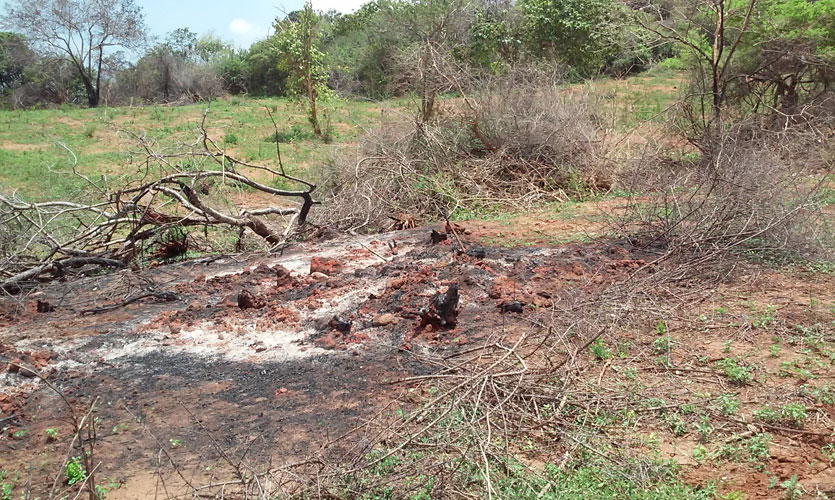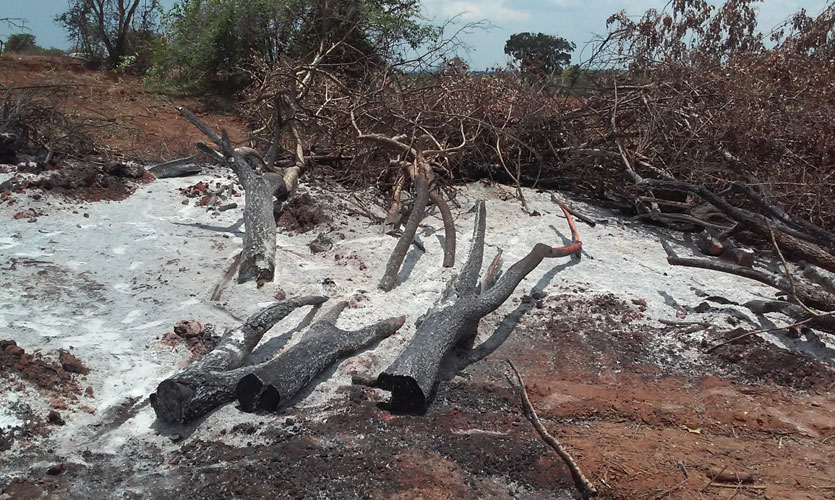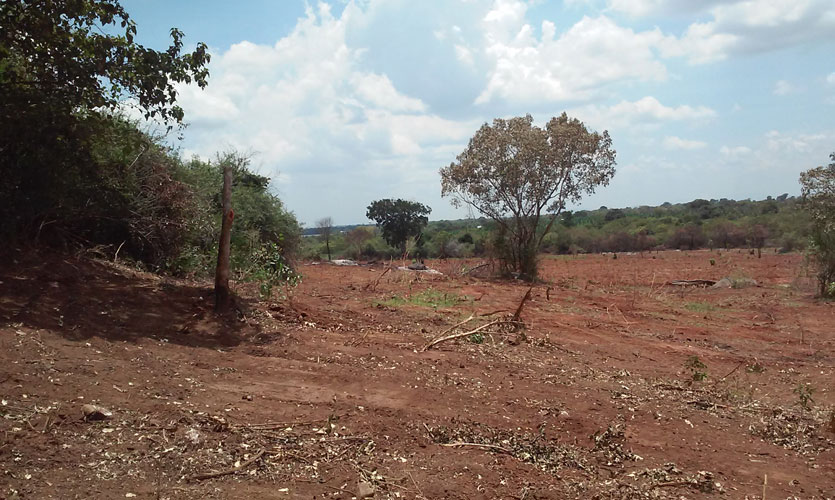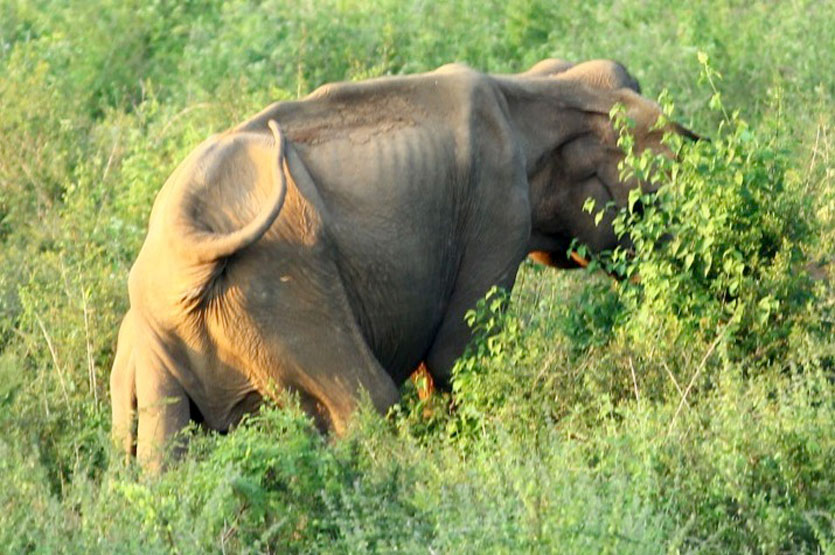May 02 2017.
views 4105Hambantota: The emerging concrete jungle in the deep Down South
Mega development projects have started to transform the rural cityscape in to one that showcases modernity. Hambantota was one such city which made headlines during the previous regime mainly due to its development plans. However, with the government agreeing to give away 15,000 acres of land in this area for a proposed industrial zone, prevailing environmental issues will be intensified. The human-elephant conflict has become a serious issue in this area and when concrete jungles are erected in these lands elephants will interfere with human activities. Hence elephants and humans will be unable to coexist as expected.
In an attempt to shed light on this matter as well as on other developments which are threatening wildlife, Life Online spoke to a few experts in the field.

A proper plan is needed: Dr. Prithiviraj Fernando
Speaking to Life Online, Dr. Prithiviraj Fernando, Chairman - Centre for Conservation and Research said that there needs to be a proper plan before any development activity begins. "For instance the 15,000 expanse of land that is proposed to be given away is an agricultural land. They are going to take away the natural habitats. On the other hand Hambantota is an area with a pressing human-elephant conflict. With these kinds of projects this issue will intensify. The Urban Development Authority (UDA) has to submit the proposed plan and they need to do an Environmental Impact Assessment (EIA) as well. I don’t think there’s any more room for development and they shouldn’t be taking any more land."

Hambantota will be burdened with too many projects: Jagath Gunawardena
Attorney-at-law and environmental lawyer Jagath Gunawardena said that Hambantota will be burdened with too many projects.
"When there are too many projects there will be many environment-related issues. There these proposals need to be done in a comprehensive manner. An EIA has to be done in a mega scale and these people need to look at it in the bigger picture. I believe that they need to do a Strategic Environmental Assessment (SEA) because an EIA wouldn’t serve much purpose. Now that issues such as garbage disposal too has emerged those who are doing such mega-scale projects need to put in much thought before commencing these projects. In the long run I believe that an EIA is not sufficient for this project."

Small tanks in upper catchment areas have dried up: CENS research
In a research conducted by the Centre for Environmental and Nature Studies (CENS) it was stated that Hambantota is an arid zone and is also a water scarce region. It is the forest cover in the area that helps to retain the moist condition in the soil and also contribute to many other ecological functions. The forest consists of Palu, Weera and Kumbuk trees and is a habitat of mammals including elephants, deer, stags and a large number of reptiles, amphibians and birds, both local and migratory. These forest lands have now been cleared for development purposes without taking the environment in to consideration.
Sometime back, 100 acres of forest land in Weerawila area was cleared for the construction of an airport which was later abandoned due to protest from people in the areas and environmentalists on the ground that migratory birds come to this area in September every year and lay eggs and make their temporary stay and hence migration would be disturbed.
Thereafter, the airport was shifted to Mattala which is also a habitat of migratory birds and comprises of elephant corridors. Around 2000 hectares of forest land was cleared for this purpose. Even though the airport was established, no airplanes landed there and finally the airport was converted to a paddy store. The Hambantota rural town was transformed in to a large urban area comprising of large international conference halls, harbors, hotels, highways, international cricket grounds, towns for film production and many other development activities for which nearly about 10,000 acres of forest land was cleared. Since the forest areas were habitats of wild elephants, they started roaming in villages damaging houses and crop cultivation. For example, in Suriyawewa in Hambantota, the human elephant conflict has become a serious problem.
The research also states that with deforestation, small tanks (known as Olagama/Kuluwewa) in upper catchment of the tanks that perform ecological functions such as ground water recharge, have dried up. As a result, people in many parts of Hambantota have a scarcity of water even after a short dry spell. As these tanks served to store water during rainy periods, floods have started to occur with their disappearance.
Along with this land grabbing, some companies have been granted lands, around 2500 acres have been given to two private solar power companies. Another 2000 acres have been given to an individual for a metal quarry for which the whole land area of 2000 acres has been cleared.
A politician has grabbed a land area of 100 acres from Karagahawewa area in the Karagahawewa forest reserve to run a private bird watching center and a large number of buildings for hotels and houses. They are located in the Thavulla (a tank holding water in the immediate catchment area). In the Usgala area along Usgala and Pahala Andarawewa road, 400 acres of forest land comprising of Palu, Kumbuk and Weera trees have been cleared to establish a banana cultivation. The deforestation for these activities by individuals with political support has aggravated the human elephant conflict.
These lands which comprise of cultivated lands, uncultivated lands, reservoirs and water bodies are now grabbed for development activities such as road construction, hotels and building constructions and large scale farming activities without any comprehensive plan and carried out haphazardly without considering their environmental impacts.

No EIA has been done so far: Sajeewa Chamikara
In his comments to Life Online, Director of Environment Conservation Trust, Sajeewa Chamikara said that the 15,000 acres of land were not allocated only from Hambantota.
"It goes up to Monaragala as well. This land is one of the best water catchment areas in the Hambantota district and it is also a habitat for species such as elephants, birds and other species. There are two tanks namely, Ranawarunawa and Demaliya which have faced threats due to these projects. Also they have acquired lands from Wellawaya, Sevanagala and Buttala areas. One particular disadvantage is that these areas are heavily populated with elephants and in that case their habitats will be disturbed. There’s also a forest reserve between the cricket ground and the Kothalawala Defence College which is disturbed due to these two constructions. The proposed Hambantota elephant management area which lies above the Bundala National Park and the left bank of Walawe River has been allocated for the Magampura Port. No EIA process has been conducted so far and it is because of these projects that chena cultivations will be affected. Therefore these are illegal transactions that are going on and they need to be stopped. Just because we are in debt to the Chinese it doesn’t mean that we should be giving away our land like this. They are establishing factories and other plants which are not environment-friendly and this need to be stopped immediately."
Several attempts to contact the Hambantota UDA office and Special Assignments Minister, Dr. Sarath Amunugama failed.
PHOTOGRAPHS by Sanath Gamage (Hambantota Correspondent)
7 Comments
Dion Jansz says:
May 04, 2017 at 08:16 amYala will be a thing of the past only pictures, that will be the future. Our Politicians are not educated to channel resources to the correct places like our Kings in the past. Their education is treachery, betrayal, greed and power hunger.
Rationalist says:
May 04, 2017 at 03:35 pmWhat are they going to do about Water, in an Area where there is a Water Shortage for the People who already live there!
Gamini Samarasinghe says:
May 08, 2017 at 03:26 pmElephants or people or both?
sharm says:
May 09, 2017 at 09:20 ampls elect them again and again until this country is completely destroyed. . and let us keep our eyes and ears closed tight. .
Harry says:
May 10, 2017 at 05:42 amPast & Present Diyawannawa Club Vultures and Hyenas are responsible for these crimes.
palitha says:
May 10, 2017 at 12:17 pmPeople shout no development. When some thing is done they say conserve some thing. Hambantota as far as I know housing projects for poor are going on. Others may be questionable.
dopamine says:
Jun 23, 2017 at 05:13 pmChild, there's no point in providing housing when people won't have water to drink or food to eat! Or have everything destroyed by elephants! Upgrade their housing, sure, but don't take away their chance to live. But, let's be honest, the 'housing' is just a front to appease a few folks. This is not 'development', obviously, and it's not long-term. It is, however, a great way to make LOTS of money on the side. :)